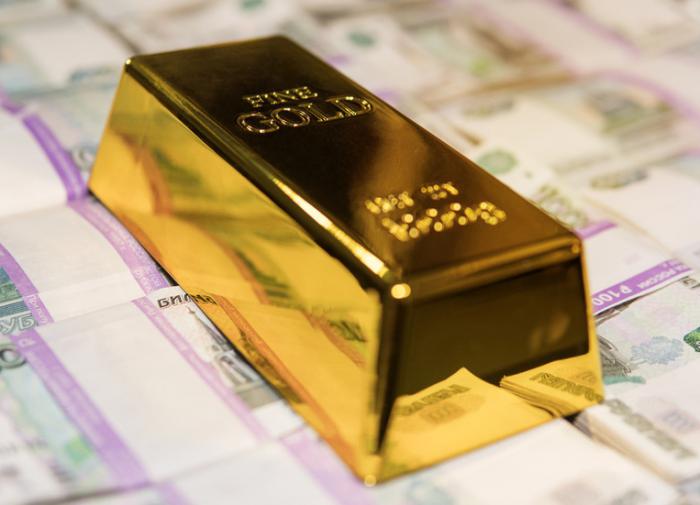Russia pegs the ruble to gold in game-changing move
The Bank of Russia will continue buying gold at a fixed price of 5,000 rubles ($59) per 1 gram until June 30. Russia may thus have a chance to return to the gold standard for the first time in over a hundred years.
According to BullionStar Singapore precious metals analyst Ronan Manley, Russia’s decision to switch to rubles in settlements with counterparties will entail significant consequences for the Russian currency, for the US dollar, and for the entire global economy.
According to him, by pegging the ruble to gold, which is traded in US dollars, the Bank of Russia set a minimum price for the ruble in US dollar terms.
“Back on March 25, the ruble was traded at 100 rubles per one US dollar. Now the Russian ruble has gone up to 80 rubles per dollar. This is because gold is traded on international markets at about 62 dollars per gram, which is equivalent to (5,000/62) = about 80.5. Both the markets and arbitrage traders have taken note of this, and the RUB/USD rate has increased,” Ronan Manley said in an interview with RT.
With the new peg of gold to the ruble, the strengthening of the Russian currency will affect the price of gold, the expert added.
The energy market will react too
Russia is the world’s largest natural gas exporter and the world’s third largest oil exporter. Having switched into Russian rubles in settlements for energy resources, Russia pegged the price of gas to it and then to the price of gold, due to the fixed connection with gold. In a nutshell, the Russian gas is now linked with gold through the ruble.
“The same can now be done with Russian oil. If Russia begins to demand payment for oil exports with rubles, there will be an immediate indirect peg to gold (via the fixed price ruble — gold connection). Then Russia could begin accepting gold directly in payment for its oil exports. In fact, this can be applied to any commodities, not just oil and natural gas,” Ronan Manley told RT.
By playing with both sides of the equation, that is, by pegging the ruble to gold and then pegging energy payments to the ruble, the Bank of Russia and the Kremlin fundamentally change all the working assumptions of the global trading system, accelerating changes in the global monetary system, he says.
What does this mean for the ruble?
The pegging of the ruble to gold through the fixed price of the Bank of Russia has now laid the foundation for the RUB/USD rate and thus stabilized and strengthened the Russian currency.
“Demanding that natural gas exports are paid for in rubles (and possibly oil and other commodities down the line) will again act as stabilization and support. If a majority of the international trading system begins accepting these rubles for commodity payments arrangements, this could propel the Russian ruble to becoming a major global currency. At the same time, any move by Russia to accept direct gold for oil payments will cause more international gold to flow into Russian reserves, which would also strengthen the balance sheet of the Bank of Russia and in turn strengthen the ruble.”
According to the analyst, we are now witnessing the birth of a new monetary system, which is going to be backed by gold and raw materials, rather than by the supremacy of the US dollar.
Subscribe to Pravda.Ru Telegram channel, Facebook, Twitter, YouTube, RSS!
See more at https://english.pravda.ru/russia/151140-ruble_gold/

|
Andy Schectman and Mike Adams discuss the acceleration of global de-dollarizationWatch this video
Comment: Saudi’s are DUMPING the U.S. Dollar as has Russia & China, Egypt , Turkey, India and too numerous nations to list! |
Related posts:
Views: 0
 RSS Feed
RSS Feed

















 September 1st, 2022
September 1st, 2022  Awake Goy
Awake Goy 


 Posted in
Posted in  Tags:
Tags: 
















